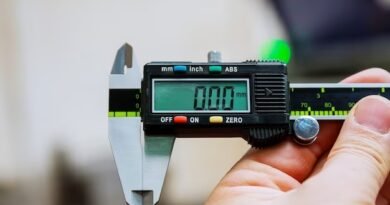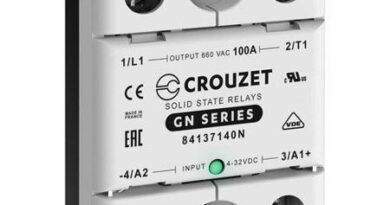A Closer Look at Surface Mount Circuit Boards: Design and Production Considerations
The surface mount refers to a method of mounting a component or device on a flat surface, such as a circuit board or a wall, without using any type of stand-off or support. This type of mounting is commonly used in electronics, as well as for certain types of light switches, such as surface mount toggle light switches.
How Does Surface Mount Technology Work?
- Preparation: The surface of the PCB is cleaned and a solder paste is applied to the pads where the components will be placed.
- Placement: The components are picked up from a tape or reel and placed onto the PCB using a machine known as a pick-and-place machine.
- Reflow: The PCB is then subjected to a process called reflow, where it is heated to a high temperature, typically between 200-260°C, to melt the solder paste and create a permanent bond between the component and the PCB.
- Inspection: The PCB is then inspected to ensure that all components are properly placed and soldered.
- Testing: Finally, the finished PCB is tested to ensure that it functions correctly.
Design Considerations for Surface Mount Components
Here are some of the most important design considerations for surface mount components:
Component size
Surface mount components are smaller than traditional through-hole components, so it is important to choose the right size components for your design.
Pad size
The size of the pads on the PCB should be appropriate for the size of the components being used. Smaller components will require smaller pads, while larger components will require larger pads.
Pad placement
The placement of the pads on the PCB should be considered carefully to ensure that the components can be properly placed and soldered.
Trace width and spacing
The width and spacing of the traces on the PCB should be appropriate for the components being used and the desired performance of the product.
Thermal management
Surface mount components generate heat during operation, so it is important to consider thermal management in the design of the product. This can include the use of heat sinks, thermal vias, and other cooling methods.
Reliability
The reliability of the surface mount components is critical to the overall performance of the product. It is important to consider the operating conditions and environmental factors that may impact the reliability of the components and to select components that are appropriate for the intended application.
Cost
The cost of the surface mount components and the manufacturing process should be considered when designing a product. It is important to choose components that are cost-effective and can be manufactured efficiently.
The Advantages and Disadvantages of Surface Mount Technology
Advantages
- Size: SMT components are much smaller than traditional through-hole components, making it possible to create smaller and more compact electronic devices.
- Increased component density: SMT allows for a higher component density on a PCB, meaning that more components can be fitted into a smaller area.
- Improved reliability: SMT components are soldered directly to the PCB, reducing the number of mechanical connections and improving the reliability of the device.
- Increased production speed: The SMT assembly process is faster and more efficient than traditional through-hole assembly, which can lead to lower production costs and faster time-to-market.
- Improved electrical performance: SMT components can have better electrical performance than through-hole components, as they have less parasitic inductance and capacitance.
Disadvantages
- Complexity: The SMT assembly process is more complex than traditional through-hole assembly and requires specialized equipment and trained personnel.
- Higher initial cost: The SMT assembly process requires more expensive equipment and materials, which can lead to a higher initial cost compared to traditional through-hole assembly.
- Decreased durability: SMT components are more fragile than through-hole components and can be more prone to damage during handling or assembly.
- Increased rework difficulty: Repairing or reworking an SMT assembly can be more difficult and time-consuming than repairing a through-hole assembly.
Choosing the Right Surface Mount Components for Your Project
When choosing surface mount components for your project, it is important to consider several key factors to ensure that the components meet your requirements and are suitable for your application. Here are some of the most important factors to consider:
- Package size: SMT components come in a variety of package sizes, ranging from small 0201 packages to larger packages like QFPs and BGA. Consider the available space on your PCB and the desired component density when choosing the package size.
- Electrical performance: Consider the electrical performance requirements for your application, such as operating temperature range, voltage and current rating, and signal frequency. Make sure that the components you choose are rated for the conditions they will be exposed to.
- Reliability: Choose components that have a proven track record of reliability, and consider factors such as mean time between failures (MTBF) and temperature cycling performance.
- Availability: Consider the availability of the components you need, both in terms of stock and lead time. Make sure that you have a reliable supplier that can provide the components when you need them.
- Cost: Consider the cost of the components, both in terms of the purchase price and the cost of any additional materials or equipment required for assembly. Choose components that offer the best balance of cost and performance for your application.
- Assembly compatibility: Consider the compatibility of the components with your SMT assembly process. Make sure that the components can be assembled easily and efficiently using your equipment and process.
- Obsolescence: Consider the risk of component obsolescence. Choose components that are widely used and are likely to be available for many years to come, or consider using components with long lead times and extended product life cycles.



